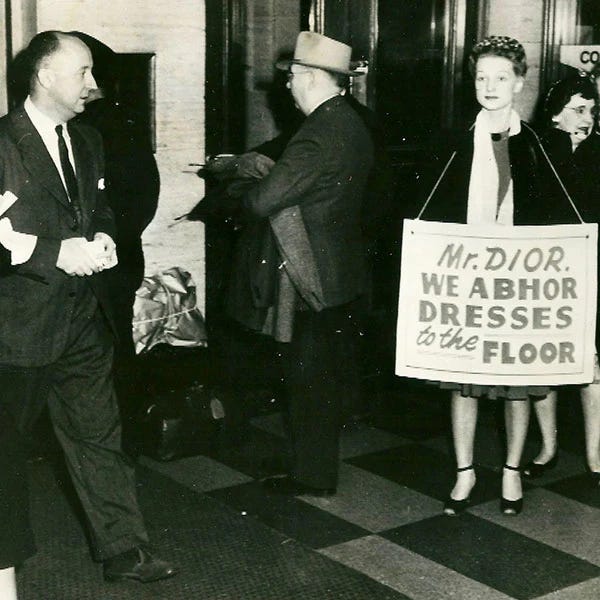When I was researching hot pants, I came across this funny 1971 article in the New York Times the trend for super short shorts. Here’s how it started:
Hot Pants … Les Shorts … Shortootsies … Happy Legs. Suddenly the fashion industry, badly burned by its effort to foist the midi on resisting womankind, has counter‐attacked. Its chief weapon: shorts.
BADLY BURNED by its EFFORT TO FOIST the midi on RESISTING WOMANKIND. So dramatic!
But actually, yes! Apparently women — used to airing out their legs in 1960s microminis — hated when designers suddenly began proposing calf-length hems to them. Fashion thrives on the new. It makes sense that in the new decade designers would push something different. But once women have a taste of freedom, of sexual liberation and bodily autonomy … well, there’s no turning back. Women not only refused to buy these dowdy modest duds, they actively protested against them. Groups with (kinda tortured but also kinda funny) acronyms like GAMS (Girls Against More Skirt) and FADD (Fight Against Dictating Designers) sprang up to lobby designers to just let them show some leg! Hence, hot pants.
This incident reminded me of another period of time in fashion history. 1947. Christian Dior had unveiled his first haute couture collection in Paris to rapturous reviews. Editors swooned at his extravagant full skirts and wasp-waist silhouettes using yards and yards of fabric, particularly after years of rations and shortages during World War II. They were starved of beauty and opulence and Dior delivered it to them on a silver platter.
Yet many American women initially resisted his nostalgic vision of femininity. During the war, the United States could no longer able to import the latest fashions from France and thus cultivated its own designers. These included lots of free-thinking women: Claire McCardell, Elizabeth Hawes, Pauline Trigère, Valentina. They made clothes that were practical, comfortable, easy. Short hemlines, big pockets, or — in the case of Valentina — just, like, incredibly sleek and chic and devastatingly simple. (Kate Hepburn was a loyal Valentina client, as was the no-nonsense Garbo.)
In other words, American women had moved on from the caged crinolines of the past and embraced modernity. The Dior woman — cosseted, corseted, covered up — seemed offensively retrograde.
When Dior first came to the U.S. in the fall of 1947, months after his house’s debut, U.S. women greeted him with hostility. Groups of them, members of the “Little Below the Knee Club,” picketed his arrival in Dallas, Chicago, Roanoke Va., and more. They held signs declaring “Mr. Dior, we abhor hemlines to the floor” or “We won’t revert to grandma’s skirt.” In the end Dior won out. His stuff was just too seductive, too powerful, too … unchallenging. Sometimes it’s just easier to succumb to society’s —ehem, men’s — expectations and fantasies of you than to fight against it.
At first, I thought the idea of women protesting the dictates of the fashion system funny, quaint. But the more I think about it, the less removed it seems. Women everywhere still are fighting to wear — or not wear — certain garments. We are told to cover up when we wear too little and to strip when we wear too much (like a woman with a headscarf or in a burqa). But in Dior’s time — and in the hot pants era — it seemed more like an inconvenience, or, if you didn’t adhere to the dominant trend, like you might be ostracized. The consequences for ignoring some designer’s dictate are insignificant now, but going against the tide has — in some cases — far greater consequences.




